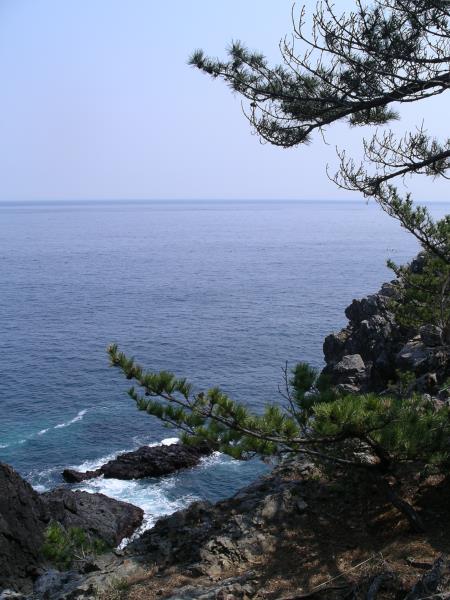

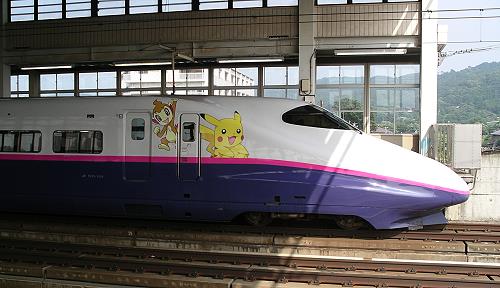

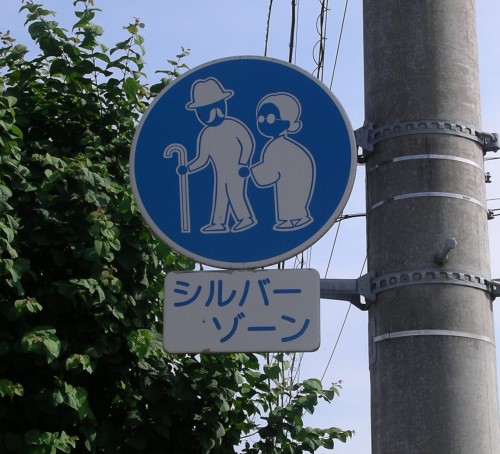
Those areas are called "Silver Zones." Aren't the signs cute?
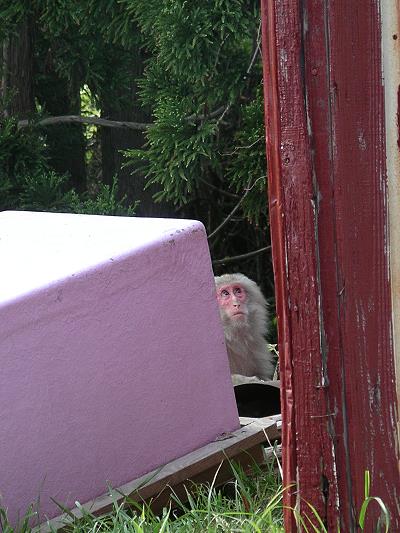
Oh, I see! You're looking at the fellow on the roof! And he's looking at us.
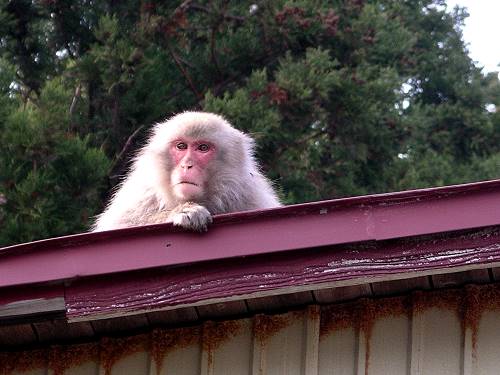
Back in May, we were driving along the Sea of Japan coast in Aomori Prefecture. We got quite a surprise when we rounded a curve and discovered a group of monkeys hanging around near the road. We stopped for some photos, and found them to be timid but curious.
Eventually, they lost interest in us and returned to munching on fruit while watching the sun set over the Sea of Japan.
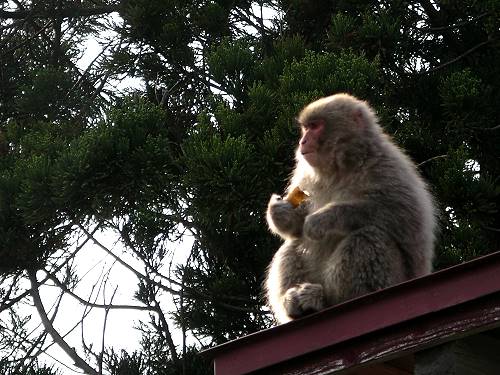
Before dinner, I headed off to the store for ingredients. Regular grocery store: no pepperoncini. Booze and imported goods store: no pepperoncini. Posh department store: no pepperoncini. I was running out of time, so I made a lateral flavor jump to capers instead. The spaghetti was good, but I wondered how different it would be with the pepperoncini. It was only much later that I started wondering whether our friend had meant pickled peppers at all.
So I asked recently. "When you said 'pepperoncini,' what did you mean?" "Garlic and togarashi (Japanese red pepper). Why?" I explained the futile hunt for small yellow pickled peppers, and we both got a big laugh out of it. But next time, I'm asking what she means if she says something Western.
Canned tuna has an odd place in Japanese cooking. We find it where we'd expect to: in sandwiches and salads. We also find it where we wouldn't expect to: on pizza, in those prepackaged, unrefrigerated sandwiches with the edges pressed together and the crusts cut off, in onigiri (rice balls). It reaches the pinnacle of awesomeness in onigiri. There's no better convenience snack than a tuna-mayo onigiri �� the creamy, salty tuna, the sticky, slightly sweet rice, and the crisp, ocean-y nori are perfect together.
Additionally, tuna keeps company with an unlikely sidekick: yellow corn (corn in Japanese cooking is another subject entirely). They're a surprisingly tasty duo �� corn and tuna pizza is far from the worst thing I've ever eaten. Salads now seem to lack something if they come with one or the other, but not both. Which raises a question: does the normalization of the tuna/corn partnership mean we've been here too long? It's likely that question will only linger until the next discovery of canned tuna in a completely unexpected place.

It wouldn't be too surprising for the name to actually be French. French has a larger influence on the Japanese language than I would have expected. For example, one of the words for "clown" in Japanese is a loanword from French �� piero. Also, it seems that the more common translation of the word kuri is into French �� marron �� rather than into English �� chestnut.
To celebrate Tanabata, people write wishes on slips of paper and tie them to bamboo.
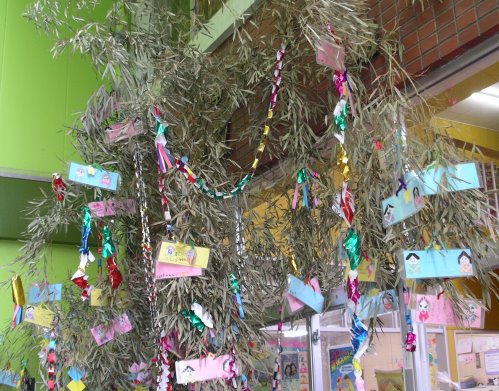
According to the Western calendar, the seventh day of the seventh month on the traditional Japanese calendar falls in August, which is when Sendai holds its famous festival. And, according to Wikipedia, this year Tanabata took on special meaning with the commencement of the G8 summit in Hokkaido and the Prime Minister's encouragement to the nation to celebrate by turning off lights and going outside to enjoy the Milky Way instead as a symbolic gesture for the environment.
Back Next

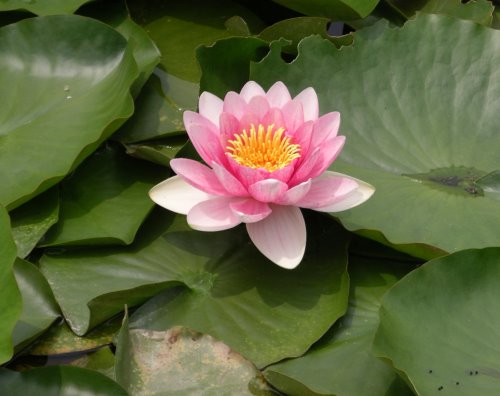
 Calendar
Calendar




